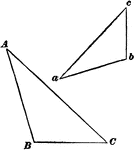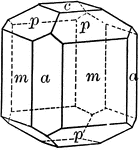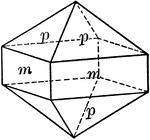
Equal Triangles by Side Side Side
Illustration showing two equal triangles. This can be used to show that two triangles are equal if the…

Equal Right Triangles by Hypotenuse Leg
Illustration showing two equal right triangles. This can be used to show that two right triangles are…

Similar Triangles
Illustration of a triangle divided by a parallel line to form two similar triangles.

Three Triangles Used to Compare Sides
Illustration showing three triangles. This is used to show the following theorem: If two triangles have…

Triangular Double Arch
Tangrams, invented by the Chinese, are used to develop geometric thinking and spatial sense. Seven figures…

Triangular Double Arch
Tangrams, invented by the Chinese, are used to develop geometric thinking and spatial sense. Seven figures…

Triangular Double Arch
Tangrams, invented by the Chinese, are used to develop geometric thinking and spatial sense. Seven figures…

Triangular Double Arch
Tangrams, invented by the Chinese, are used to develop geometric thinking and spatial sense. Seven figures…

Trisoctahedron
"The trisoctahedron is a form composed of twenty-four isosceles triangular faces, each of which intersects…
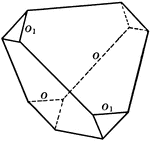
Tristetrahedron
"The faces of the tristetrahedron correspond to one-half the faces of a trapezohedron." — Ford,…
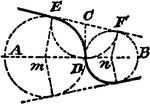
Construction Of Two Circles That Tangent Themselves and 2 Given Lines
An illustration showing how to construct two circles that tangent themselves and two given lines. "Draw…

Intersection of Two Cones
"The cone B would be developed by cutting a right section as S—S whose stretchout will be a circle…

Two Cylinders with Axes Not Intersecting
"If the cylinder A were to be developed a right section as at S—S would have to be taken, whose…

Intersection of Two Cylinders
"The intersection of two cylinders might represent a dome on a boiler. If the top view of cylinder A…
Segment, Vertical Line
Illustration of a vertical line segment. A line segment is a section of a line with definite endpoints.
Segment, Vertical Line
Illustration of a vertical line segment. A line segment is a section of a line with definite endpoints.…

Vesuvianite
"Tetragonal. Prismatic in habit. Often vertically striated. Common forms are prisms of first and second…
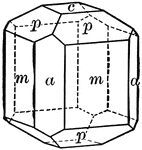
Vesuvianite
"Tetragonal. Prismatic in habit. Often vertically striated. Common forms are prisms of first and second…

Vulture
Tangrams, invented by the Chinese, are used to develop geometric thinking and spatial sense. Seven figures…

Vulture
Tangrams, invented by the Chinese, are used to develop geometric thinking and spatial sense. Seven figures…

Vulture
Tangrams, invented by the Chinese, are used to develop geometric thinking and spatial sense. Seven figures…

Vulture
Tangrams, invented by the Chinese, are used to develop geometric thinking and spatial sense. Seven figures…

Water Skier
Tangrams, invented by the Chinese, are used to develop geometric thinking and spatial sense. Seven figures…

Water Skier
Tangrams, invented by the Chinese, are used to develop geometric thinking and spatial sense. Seven figures…

Water Skier
Tangrams, invented by the Chinese, are used to develop geometric thinking and spatial sense. Seven figures…

Water Skier
Tangrams, invented by the Chinese, are used to develop geometric thinking and spatial sense. Seven figures…
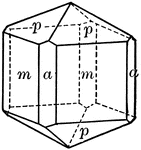
Wernerite
"Tetragonal; tripyramidal. Crystals usually prismatic. Prominent forms are prisms of the first and second…

Wernerite
"Tetragonal; tripyramidal. Crystals usually prismatic. Prominent forms are prisms of the first and second…
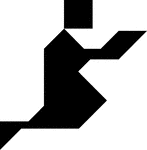
Woman Kneeling
Tangrams, invented by the Chinese, are used to develop geometric thinking and spatial sense. Seven figures…
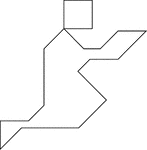
Woman Kneeling
Tangrams, invented by the Chinese, are used to develop geometric thinking and spatial sense. Seven figures…

Woman Kneeling
Tangrams, invented by the Chinese, are used to develop geometric thinking and spatial sense. Seven figures…
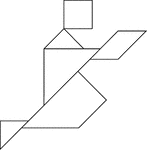
Woman Kneeling.
Tangrams, invented by the Chinese, are used to develop geometric thinking and spatial sense. Seven figures…
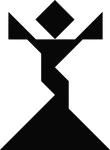
Woman Standing
Tangrams, invented by the Chinese, are used to develop geometric thinking and spatial sense. Seven figures…
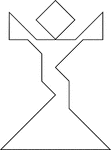
Woman Standing
Tangrams, invented by the Chinese, are used to develop geometric thinking and spatial sense. Seven figures…
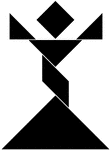
Woman Standing
Tangrams, invented by the Chinese, are used to develop geometric thinking and spatial sense. Seven figures…

Woman Standing
Tangrams, invented by the Chinese, are used to develop geometric thinking and spatial sense. Seven figures…
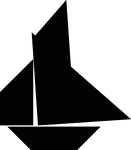
Yacht
Tangrams, invented by the Chinese, are used to develop geometric thinking and spatial sense. Seven figures…
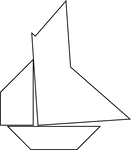
Yacht
Tangrams, invented by the Chinese, are used to develop geometric thinking and spatial sense. Seven figures…

Yacht
Tangrams, invented by the Chinese, are used to develop geometric thinking and spatial sense. Seven figures…

Yacht
Tangrams, invented by the Chinese, are used to develop geometric thinking and spatial sense. Seven figures…

Zincite
"A crystal of zincite with a prism terminated by a pyramid above a basal pinacoid below." — Ford,…

Zircon
"Tetragonal. Crystals usually show a simple combination of prism and pyramid of the first order. The…
